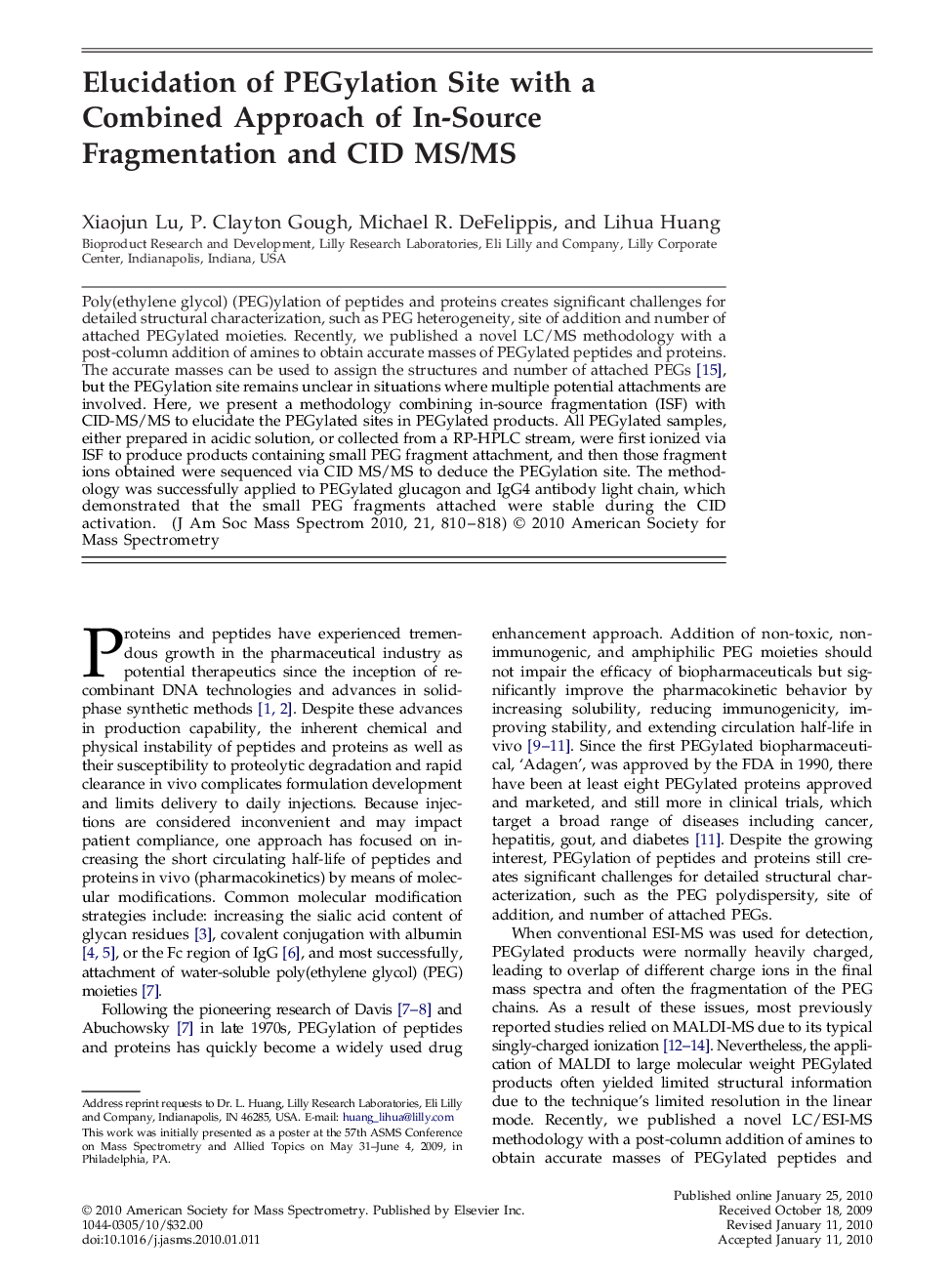| کد مقاله | کد نشریه | سال انتشار | مقاله انگلیسی | نسخه تمام متن |
|---|---|---|---|---|
| 1195141 | 964282 | 2010 | 9 صفحه PDF | دانلود رایگان |

Poly(ethylene glycol) (PEG)ylation of peptides and proteins creates significant challenges for detailed structural characterization, such as PEG heterogeneity, site of addition and number of attached PEGylated moieties. Recently, we published a novel LC/MS methodology with a post-column addition of amines to obtain accurate masses of PEGylated peptides and proteins. The accurate masses can be used to assign the structures and number of attached PEGs [15], but the PEGylation site remains unclear in situations where multiple potential attachments are involved. Here, we present a methodology combining in-source fragmentation (ISF) with CID-MS/MS to elucidate the PEGylated sites in PEGylated products. All PEGylated samples, either prepared in acidic solution, or collected from a RP-HPLC stream, were first ionized via ISF to produce products containing small PEG fragment attachment, and then those fragment ions obtained were sequenced via CID MS/MS to deduce the PEGylation site. The methodology was successfully applied to PEGylated glucagon and IgG4 antibody light chain, which demonstrated that the small PEG fragments attached were stable during the CID activation.
Graphical AbstractWe present a new approach to elucidate the PEGylated sites in PEGylated protein or protein by combining in-source fragmentation with CID-MS/MS.Figure optionsDownload high-quality image (202 K)Download as PowerPoint slide
Journal: Journal of the American Society for Mass Spectrometry - Volume 21, Issue 5, May 2010, Pages 810–818